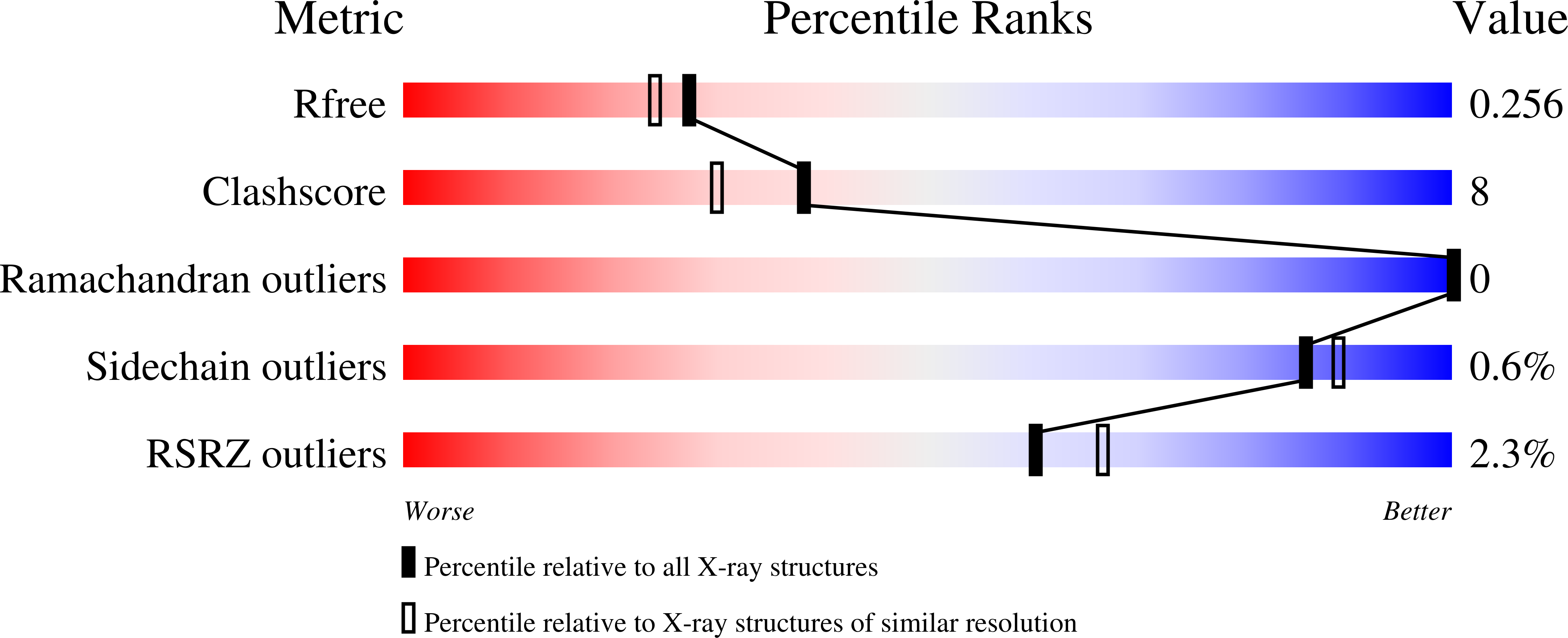The Cysteine Dioxygenase Homologue from Pseudomonas aeruginosa Is a 3-Mercaptopropionate Dioxygenase.
Tchesnokov, E.P., Fellner, M., Siakkou, E., Kleffmann, T., Martin, L.W., Aloi, S., Lamont, I.L., Wilbanks, S.M., Jameson, G.N.(2015) J Biol Chem 290: 24424-24437
- PubMed: 26272617
- DOI: https://doi.org/10.1074/jbc.M114.635672
- Primary Citation of Related Structures:
4TLF - PubMed Abstract:
Thiol dioxygenation is the initial oxidation step that commits a thiol to important catabolic or biosynthetic pathways. The reaction is catalyzed by a family of specific non-heme mononuclear iron proteins each of which is reported to react efficiently with only one substrate. This family of enzymes includes cysteine dioxygenase, cysteamine dioxygenase, mercaptosuccinate dioxygenase, and 3-mercaptopropionate dioxygenase. Using sequence alignment to infer cysteine dioxygenase activity, a cysteine dioxygenase homologue from Pseudomonas aeruginosa (p3MDO) has been identified. Mass spectrometry of P. aeruginosa under standard growth conditions showed that p3MDO is expressed in low levels, suggesting that this metabolic pathway is available to the organism. Purified recombinant p3MDO is able to oxidize both cysteine and 3-mercaptopropionic acid in vitro, with a marked preference for 3-mercaptopropionic acid. We therefore describe this enzyme as a 3-mercaptopropionate dioxygenase. Mössbauer spectroscopy suggests that substrate binding to the ferrous iron is through the thiol but indicates that each substrate could adopt different coordination geometries. Crystallographic comparison with mammalian cysteine dioxygenase shows that the overall active site geometry is conserved but suggests that the different substrate specificity can be related to replacement of an arginine by a glutamine in the active site.
Organizational Affiliation:
From the Departments of Chemistry and.















